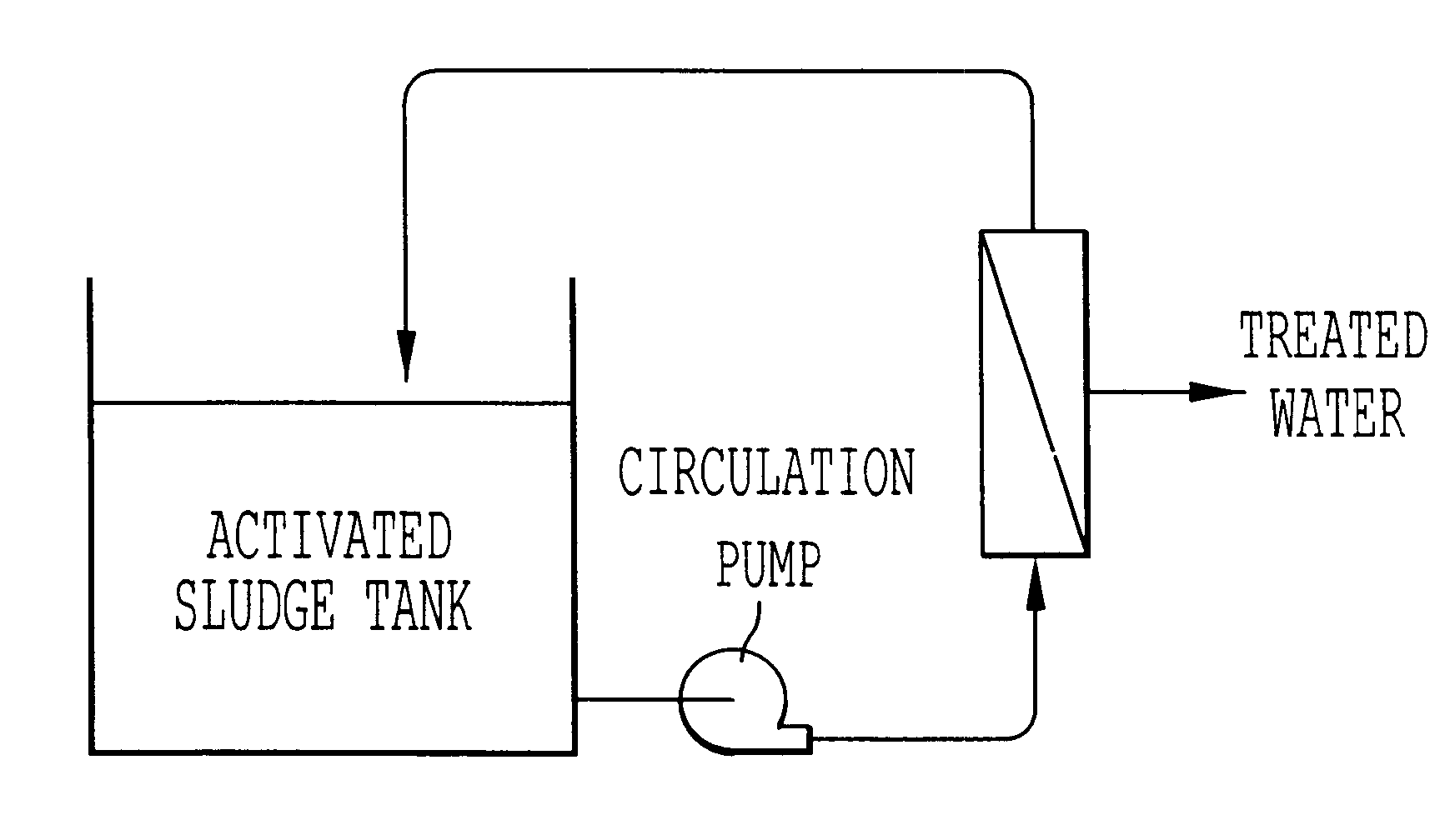Apparatus and method for waste water treatment
a waste water treatment and apparatus technology, applied in water/sewage multi-stage treatment, separation processes, membranes, etc., can solve the problems of excessive sludge drawn out of the system, limited bod volume to the process line, and inability to meet the requirements of aeration tank size,
- Summary
- Abstract
- Description
- Claims
- Application Information
AI Technical Summary
Problems solved by technology
Method used
Image
Examples
example
A pilot plant for waste water treatment was prepared for carrying out the invention, comprising a 20 m.sup.3 waste water tank, a 20 m.sup.3 carrier-fluidized aeration tank, and a 40 m.sup.3 complete oxidation tank. 2 m.sup.3 of an acetalized polyvinyl alcohol gel carrier (having a particle diameter of about 4 mm) was put into the aeration tank. A filtration membrane unit comprising two hollow fiber membrane modules of polysulfone resin (membrane area: 20 m.sup.2) was disposed outside the complete oxidation tank. Waste water was treated in this pilot plant driven in an internal-pressure circulated filtration system at a filtration rate of 20 m.sup.3 / day. With the water having passed through the separation membrane being discharged out of the complete oxidation tank, the sludge was concentrated and circulated in the system. The flowchart of the pilot plant in this Example 1 is as in FIG. 1. Based on the invention, the BOD volume load to the carrier-fluidized aeration tank was 3.5 kg / ...
PUM
| Property | Measurement | Unit |
|---|---|---|
| Fraction | aaaaa | aaaaa |
| Weight | aaaaa | aaaaa |
| Pore size | aaaaa | aaaaa |
Abstract
Description
Claims
Application Information
 Login to View More
Login to View More - R&D
- Intellectual Property
- Life Sciences
- Materials
- Tech Scout
- Unparalleled Data Quality
- Higher Quality Content
- 60% Fewer Hallucinations
Browse by: Latest US Patents, China's latest patents, Technical Efficacy Thesaurus, Application Domain, Technology Topic, Popular Technical Reports.
© 2025 PatSnap. All rights reserved.Legal|Privacy policy|Modern Slavery Act Transparency Statement|Sitemap|About US| Contact US: help@patsnap.com


